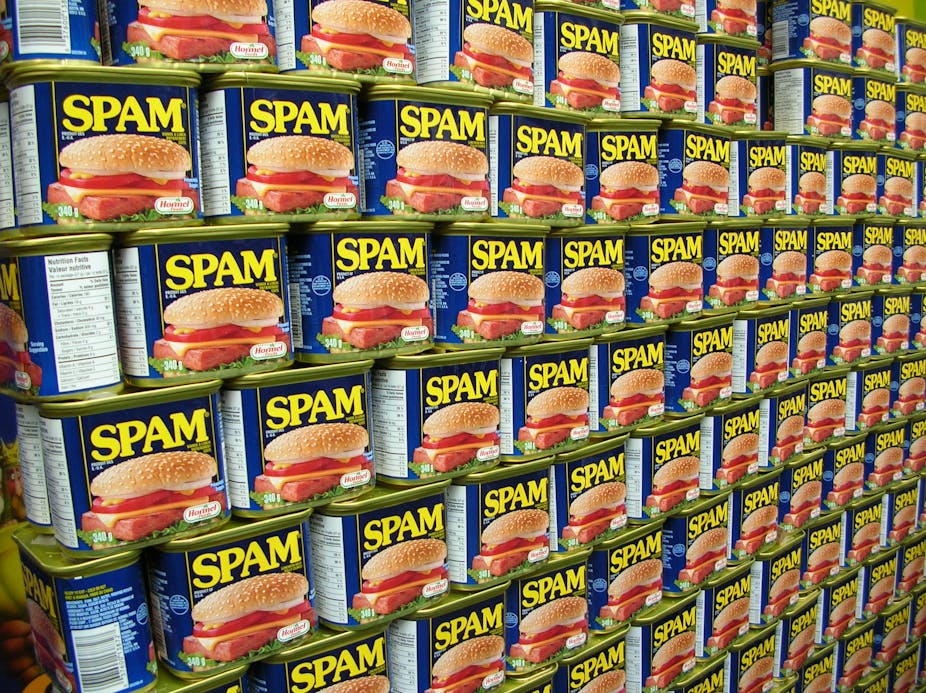Today many people follow vegetarian, vegan and a variety of eclectic diets, but before World War II meals were commonly based on the meat and two veg philosophy. And so food rationing, which began 75 years ago on January 8 1940 and lasted for a remarkable 14 years, forced many people to adjust their eating patterns to accommodate wartime food restrictions.
This was not the first time that rationing was introduced in Britain. Wartime food controls were first devised and implemented on the British home front towards the end of World War I. Large losses in shipping from German U-boat attacks and the resultant shortages made food restrictions vital. But food controls at this time were limited and not strictly enforced, often leading to hoarding and shortages.
So when World War II was approaching, officials were determined to organise a better programme of food management. They set out to construct a food system that was more comprehensive and all-encompassing. And so initial planning began in advance of the declaration of war in September 1939. The government had decided to begin food controls in the autumn of 1939. But due to public anxiety about rationing it delayed the introduction of food controls until the following January.
Bring on the cod liver oil
Amounts of basic foods such as meat, cheese and sugar were set for adults regardless of age, gender, class or occupation. At the beginning only bacon, butter, and sugar were rationed, with meat, cheese and tea later added to the list. Most food rations were allocated by weight, but meat by price. Allocated rations varied throughout the war depending on supply levels.

Pregnant and nursing mothers, and later, men working in heavy industries were given additional allowances of food such as meat to sustain them. Children and babies also had different rations including extra milk and meat, as well as the provision of orange juice and cod liver oil. Everyone was issued a coloured ration book according to their status. People were required to register with shops, and when purchasing food, they presented their ration book for verification of the amounts allocated to them.
Married women bore the brunt of having to adjust to the ration system because they were primarily responsible for feeding family members. These women pooled the quantities of food allocated to each member of their family, allowing their households to benefit. Some mothers used children’s extra meat ration to feed larger portions to fathers, while also using the children’s orange juice allowance in their cookery dishes.
Initially there were some difficulties with the organisation and supplies for the food programme which resulted in some discontent about the controls. But soon a down-to-earth approach to the public relations campaign promoting rationing, led by Lord Woolton, helped to create positivity among the majority of the British wartime population.
In 1941, the government introduced a points-based scheme for certain items including tinned goods. Food points on each item varied weekly, according to supply. Shoppers had the freedom to apply their allocated points to purchase foods covered under this system, which allowed more flexibility in the food programme and gave consumers more choice in constructing their meals.
Historians, researching wartime eating have shown that patterns were not radically altered, but old patterns of eating were modified to accommodate the quantity of rationed foods available. People sought to maintain, as close as possible, their pre-war diets. If dishes required items that were not readily available or took up too many rations at one time, they were less often made during wartime.
During the war, foods such as SPAM and powdered eggs were shipped from America to Britain through the Lend-Lease Agreement between the two countries. Margarine, which was largely disliked before the war, became a part of the rations allotted to each household, but remained unpopular.
After the war
But all wasn’t over with the end of the war. Instead, it got worse after 1945 because of severe economic issues at home, world shortages of food, and the diversion of supplies to feed a recovering Europe. And this continuation did not sit at all well with the British public. While people could readily understand the necessity to limit food resources in wartime in order to win the conflict, once it was over it was a different story.
Discontent grew over the sustained, and at times, worsening conditions of the food situation in the post-war period. Potatoes, the backbone of the wartime diet, became rationed for the first time in 1947, as did bread between 1946 and 1948. To compensate, the government sought to import alternative food supplies, including snoek, a fish commonly eaten in South Africa and South America, which proved unpopular to the British palate.
In Britain today, snoek is nowhere to be seen, but SPAM is readily available in most grocery shops, suggesting the enduring legacy of food rationing 75 years on.

